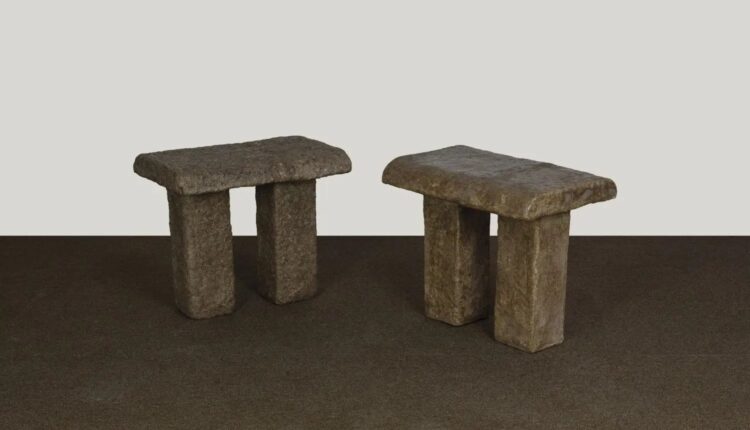Coffee Grounds Transformed Into Sustainable Furniture – CoffeeTalk
The Unsleepy series by CHanhyeok Kim is a material-led furniture collection that reimagines coffee grounds as an untapped resource for Korean design. The collection focuses on the afterlife of waste, specifically spent coffee grounds, and reconfigures it into functional, sculptural forms. The Korean designer’s collection offers a radical reflection on the pressing issues of waste management and sustainability, drawing attention to overlooked materials through expressive surface design in furniture.
The Unsleepy Series comprises two stools and four chair designs, all unified through the same material language, which CHanhyeok Kim refers to as coffee dough. This substance is made from a mixture of coffee ground waste and architectural binders like plaster or clay, creating a pliable, dough-like consistency. It is then applied onto a paper mold, creating the object’s shape, and left to dry and crack organically, so that no two pieces will ever be identical. This process gives the furniture its characteristic texture, which is then either coated with paint or left natural. In embracing the irregularity of the cracks that derive from the process, Kim also invites us to reconsider how we understand the lifecycle of furniture, as a being in flux instead of unchanging.
The project’s material choice is deeply tied to CHanhyeok Kim’s origins, as Korea is also dubbed as the ‘Republic of Coffee’ due to it being the second country in the world by caffeine consumption. Importing more than 200,000 tons of coffee beans a year, coffee ground waste might be an infinite material resource, according to the designer. In this context, Kim’s work becomes more than an aesthetic proposition, but a direct engagement with Korea’s consumption habits and a speculative approach to material reuse.
The Unsleepy products are defined by what the designer calls a ‘Meju’ texture, reminiscent of the traditional Korean brick made from fermented soybeans, used in the preparation of doenjang and gochujang. The food and chairs share the same cracked surface, which highlights the natural origins that both materials share. By grounding both the material sourcing and the visual language of the collection in Korean references, Kim situates Unsleepy as a deeply site-responsive design, resisting the trends of globalization.
Through Unsleepy, Kim invites us to reconsider the value of the discarded material, highlighting its imperfections and unpredictability. The furniture collection becomes a site of tension between the cleanliness and perfection of design and the inefficiencies of the real world. It does not seek to replicate conventional industrial processes, but develops a new one constructed specifically for its material base, rooted in locality. Using materials as a starting point in design allows for unexplored paths to be pursued for the first time, looking at a more eccentric and deliberate future for the field.
Read More @ designwanted
Source: Coffee Talk



